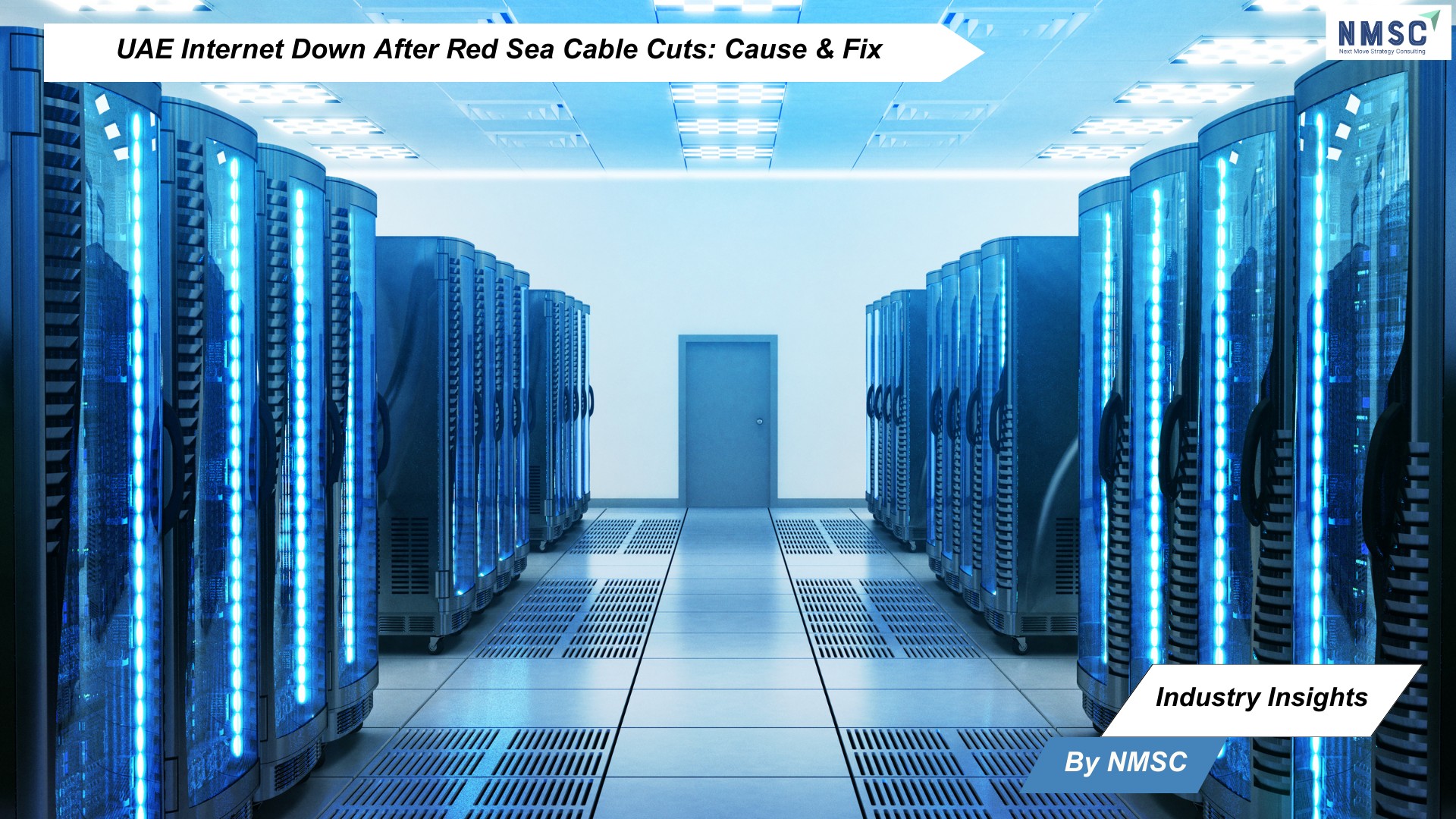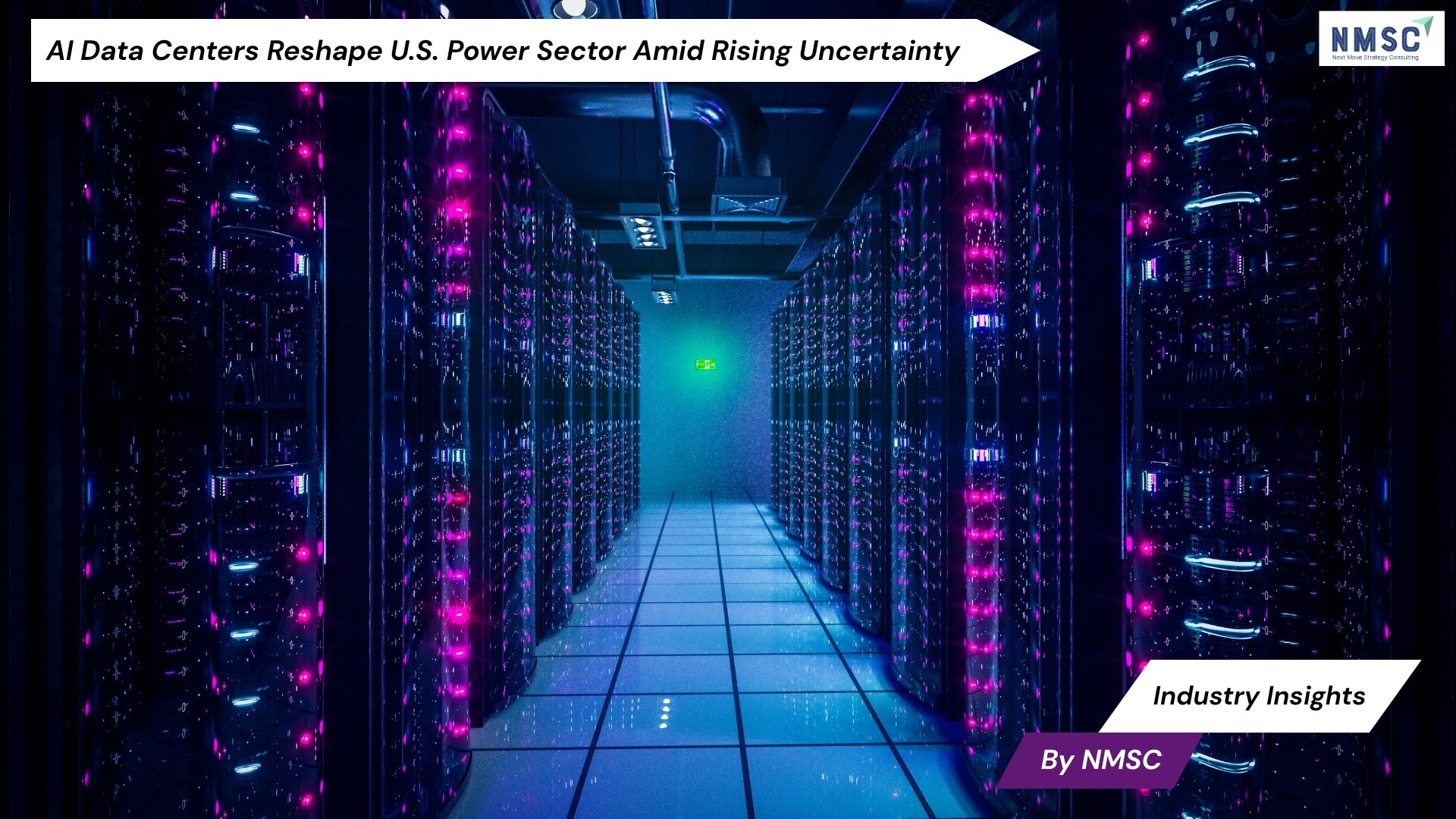UAE Internet Down After Red Sea Cable Cuts: Cause & Fix
Published: 2025-09-08

Industry Insights from Next Move Strategy Consulting
A series of undersea cable cuts in the Red Sea on September 6, 2025, triggered significant internet disruptions across the UAE and parts of the Middle East, impacting major telecom providers du, Etisalat, and Microsoft’s Azure cloud platform. The outages, which began at 5:45 UTC (9:45am UAE time), caused widespread slowdowns and intermittent connectivity, leaving users grappling with unstable services.
Cable Cuts Disrupt Regional Connectivity
The Red Sea cable outages affected critical subsea systems, including the SMW4 and IMEWE cables near Jeddah, which are vital for internet traffic between Europe, the Middle East, and Asia. A global internet observatory, the disruptions led to degraded connectivity across multiple countries, including India and the broader Middle East. UAE users reported major slowdowns between 6pm on September 6 and 3am on September 7, with some experiencing complete service unavailability.
Microsoft, operating Azure, confirmed increased latency in network traffic routed through the Middle East. “Network traffic is not interrupted as Microsoft has rerouted traffic through alternate network paths. However, we do expect higher latency on some traffic that previously traversed through the Middle East,” the company stated, committing to daily updates. Traffic not routed through the region remained unaffected.
UAE Telecom Providers Respond
UAE’s leading telecom operators, e& (Etisalat) and du, acknowledged the disruptions. Etisalat issued a statement via social media: “Dear valued customers, you may experience slowness in data services due to an interruption in the international submarine cables. Our technical teams are currently working to address the issue.”
du echoed this, noting: “Dear Valued Customers, You may experience some slowness in our data services due to an International submarine cable cut. Our technical teams are working with international providers to resolve the issue.” Both providers are collaborating with global partners to reroute traffic but have not shared specific restoration timelines.
Key Impacts at a Glance:
-
Widespread Slowdowns: Users faced unstable connections and latency from 6pm Sep 6 to 3am Sep 7.
-
Affected Systems: SMW4 and IMEWE cables disrupted, impacting UAE, India, and Middle East.
-
Provider Response: du, Etisalat, and Microsoft Azure rerouting traffic to mitigate outages.
-
Ongoing Efforts: Technical teams working on restoration, though full recovery may take weeks.
Challenges and Recovery Outlook
While the precise cause of the cable cuts remains unclear, historical data suggests that approximately 70% of undersea cable incidents result from accidental damage, often by ship anchors. The Red Sea’s geopolitical sensitivity, particularly amid the Houthi conflict in Yemen, has raised concerns about cable vulnerabilities, though no deliberate sabotage has been confirmed. As of September 7, some UAE services showed improvement, but user reports indicated persistent instability.
Regional and Industry Implications
The outage underscores the fragility of global internet infrastructure, particularly in geopolitically sensitive regions like the Red Sea. With critical cables like SMW4 and IMEWE disrupted, the incident highlights the need for robust alternate routing and resilient network designs. Telecom providers and cloud platforms like Azure are under pressure to stabilize services while navigating logistical challenges in restoring full connectivity.
Navigating a Connected Future
As the UAE and Middle East recover from this disruption, the focus remains on restoring seamless connectivity. The incident serves as a reminder of the region’s reliance on undersea cables and the importance of resilient infrastructure to support digital economy. Telecom providers and global partners continue their efforts to address the outage, with updates expected as restoration progresses.
Impact on the Data Center Market
The September 2025 Red Sea subsea cable disruption carries lasting implications for the Middle East’s data center and cloud ecosystem. With latency spikes across Azure and instability for du and e&, enterprises were reminded of their heavy reliance on a few chokepoints for global connectivity.
-
Local Hosting Demand: Enterprises are expected to accelerate migration toward regional Tier III/IV data centers in the UAE, Saudi Arabia, and Oman to minimize dependence on fragile subsea links.
-
Edge & Interconnect Growth: The disruption highlights the value of edge data centers and internet exchange points for reducing latency and enabling redundancy.
-
Resilience Premium: Investors and enterprises will increasingly favor operators who can guarantee multi-cable redundancy, terrestrial backhaul, and diverse peering options.
-
Strategic Investment Signal: For hyperscalers (Microsoft, AWS, Google) and colocation players, this incident strengthens the case for new builds and expansions in the Middle East to support sovereign cloud and business continuity.
In short, the outage underlines that connectivity resilience is now a core differentiator in the data center market. Operators positioned as low-latency, multi-route, disaster-resilient hubs will benefit most as regional demand rises.
Prepared by: Next Move Strategy Consulting
About the Author
 Nitrishna Sonowal is a skilled SEO Executive and Content Writer with over 3 years of experience in the digital marketing industry. With a deep understanding of the ever-evolving digital landscape, she blends analytical insights with creative storytelling to deliver impactful digital solutions. She creates content that resonates with both clients and readers alike. Outside of work, she enjoys dancing, baking, and traveling to new places.
Nitrishna Sonowal is a skilled SEO Executive and Content Writer with over 3 years of experience in the digital marketing industry. With a deep understanding of the ever-evolving digital landscape, she blends analytical insights with creative storytelling to deliver impactful digital solutions. She creates content that resonates with both clients and readers alike. Outside of work, she enjoys dancing, baking, and traveling to new places.
About the Reviewer
 Sanyukta Deb is a seasoned Content Writer and Team Leader in Digital Marketing, known for her expertise in crafting online visibility strategies and navigating the dynamic digital landscape. With a flair for developing data-driven campaigns and producing compelling, audience-focused content, she helps brands elevate their presence and deepen user engagement. Beyond her professional endeavors, she finds inspiration in creative projects and design pursuits.
Sanyukta Deb is a seasoned Content Writer and Team Leader in Digital Marketing, known for her expertise in crafting online visibility strategies and navigating the dynamic digital landscape. With a flair for developing data-driven campaigns and producing compelling, audience-focused content, she helps brands elevate their presence and deepen user engagement. Beyond her professional endeavors, she finds inspiration in creative projects and design pursuits.
















Add Comment